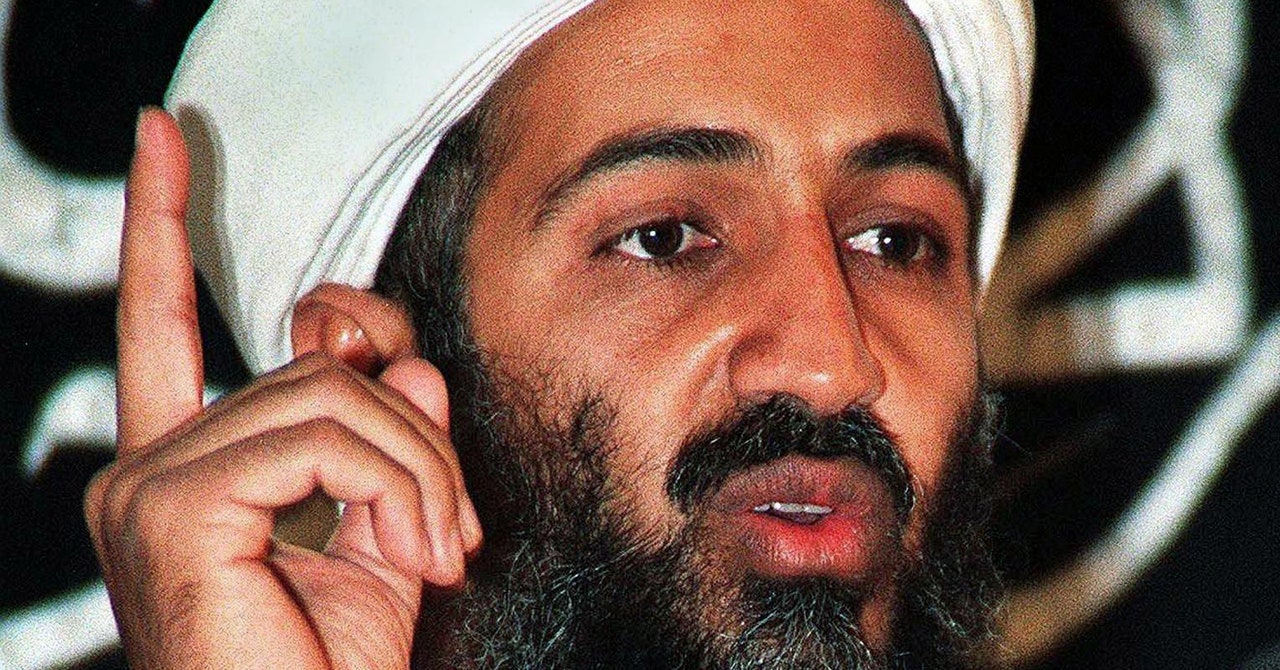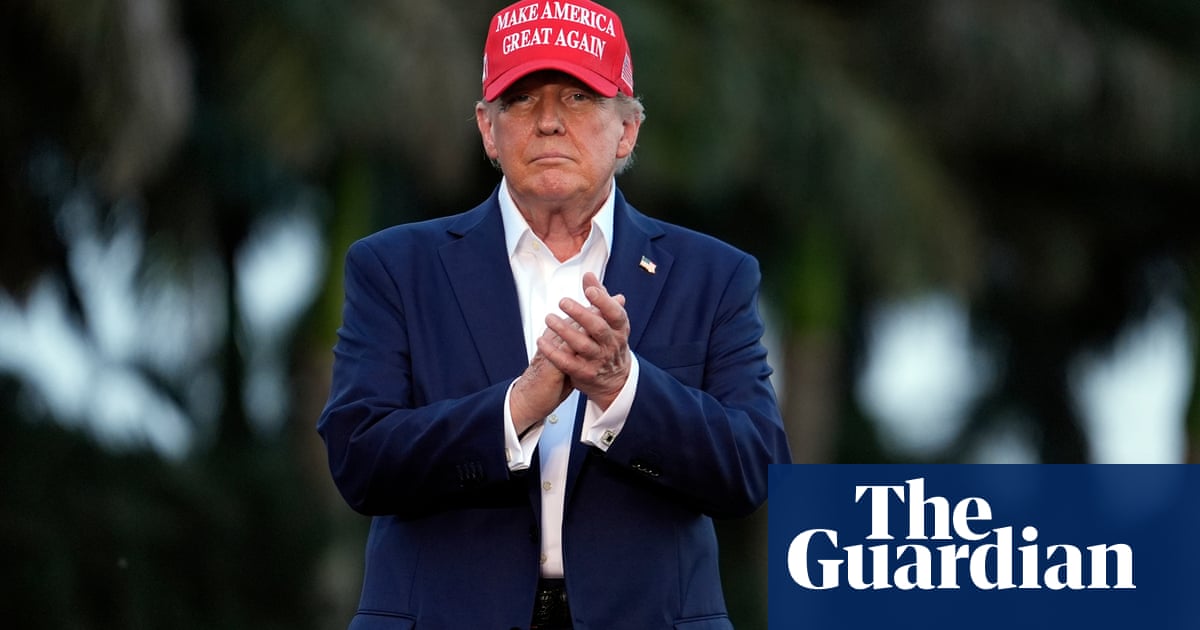The Bin Laden Letter Is Being Weaponized by the Far Right

A number of users have posted TikToks in recent days that share parts of Osama bin Laden’s 2002 “Letter to America,” where the deceased al Qaeda leader said the attacks on September 11, 2001, were justified. Posters used it to critique US foreign policy and have claimed that the letter changed their perspective. But while some have questioned the actual virality of these posts as conversations about these TikToks exploded on Thursday evening, far-right lawmakers and influencers have used the renewed interest in bin Laden to spread conspiracy theories about 9/11 and push their own anti-China agenda.
On his Thursday podcast, right-wing commentator and conspiracist Glenn Beck compared the TikTok posts to “the Antichrist forming,” and claimed the phenomenon shows “the terrifying threat America continues to face from global powers.” He then compared bin Laden’s worldview “to modern leftist talking points.”
Charlie Kirk, president of Turning Point USA, boosted conspiracies about public education. “Why is everyone shocked [that] a generation taught to hate America would embrace Osama Bin Laden?” Kirk wrote on Telegram.
One of his followers replied: “Not shocked. We as a whole let this crap happen in our ‘higher’ education. We did not pay attention to the way the marxists infiltrated and thought it was just going to go away. Not anymore!”
The issue has also led to renewed calls for TikTok to be banned by right-wing lawmakers who have repeatedly claimed, without evidence, that TikTok is used by the Chinese government to spy on US citizens.
“TikTok is an espionage tool and a propaganda machine for the Communists. First pro-Hamas propaganda, now bin Laden?” Senator Josh Hawley from Missouri wrote on X, the website formerly known as Twitter, on Thursday night. “The CCP probably can’t believe we’re letting them get away with it. Ban TikTok.”
Similar calls were repeated elsewhere on X and on platforms home to pro-Trump far-right extremists. The top post on the message board known as The Donald this morning read, “Either get rid of TikTok or surrender to China,” and linked to an article that claimed the bin Laden trend was a Chinese government plot to undermine US democracy.
On Telegram, a number of QAnon influencers and far-right figures used the renewed interest in the al Qaeda leader to boost conspiracy theories around the 9/11 terrorist attacks. “A lot of grown ass adults still don’t question 9/11 being an inside job,” QAnon influencer Jordan Sather wrote on Telegram. “The CIA and Mossad perpetrated 911,” a follower of right-wing commentator Jack Posobiec wrote in response to a link Posobiec shared about the TikTok trend, adding: “Bin Laden was their MKUltra puppet and was protected in hiding.”
Still, it is unclear what sparked the sharing of bin Laden’s letter.
Based on a review of TikTok conducted by WIRED before the platform began removing videos, the first video directing viewers to read bin Laden’s letter was posted on Friday, November 10, by an account with just 3,800 followers. The video has only been viewed 1,133 times as of the morning of Friday, November 17, with just 12 comments.
The account is, however, quite prolific, and posts up to a dozen videos each day, most of which are reposted from other accounts. The account holder appears to be an avid Trump supporter, and they share questionable content including conspiracy theories mostly linked to president Joe Biden. One video shared this week suggested that Biden was in fact a body double.
Unlike some of the later videos, which garnered many more views, this account holder didn’t read any of the content of the letter, simply telling their followers: “It’s too much to say, but I need for you guys to go and google Osama bin Laden’s “Letter to America,” and read it. It will explain a lot.”
The video was posted 24 hours after searches for the bin Laden letter spiked, according to data from Google Trends. The account holder did not respond to WIRED’s request for comment on how they learned about the letter. (A TikTok spokesperson told WIRED that the company was removing the November 10 video after WIRED had flagged it, and WIRED can confirm the video has now been removed.)
Bin Laden’s letter did not gain much attention on TikTok until Monday, November 13, when another TikTok user posted a video urging people to go and read the letter. Again, this video, from an account with 12,800 followers, did not read specific lines from the letter, but showed the poster apparently in shock upon discovering the letter’s contents.
This video gained a lot more attention, racking up over 210,000 views before it was taken down on Thursday. Numerous other accounts tagged or referenced this video in their own “Letter to America” videos in the following days.
The account holder, who didn’t respond to a question from WIRED asking where she first heard about the letter, posted a follow-up video on Wednesday, November 15, explaining that she had heard about the bin Laden video over the weekend but didn’t have time to post about it until Monday, November 13, though she failed to say where she had seen it referenced.
Then, on Wednesday, The Guardian removed an English translation of bin Laden’s letter from its website. The publication said they first noticed an uptick in traffic to the site on Thursday, November 9, but didn’t remove the letter until Wednesday, after videos about it were shared to TikTok.
“The transcript published on our website had been widely shared on social media without the full context,” a note on the website reads. “Therefore we decided to take it down and direct readers instead to the news article that originally contextualized it.”
After The Guardian removed the letter, some accounts, including those on X, began sharing a link to a page on the website of the US Director of National Intelligence, which hosts a different letter written by bin Laden in 2008.
The removal of the letter sparked a flurry of new videos on TikTok criticizing The Guardian’s decision and claiming it was somehow evidence that bin Laden’s message was being censored, even though the letter is freely available elsewhere online.
The same day, journalist Yashar Ali shared a compilation of the TikTok videos on X, with the comment: “Many of them say that reading the letter has opened their eyes, and they’ll never see geopolitical matters the same way again.” As of Friday morning, that video on X has been viewed 37 million times.
“Content promoting this letter clearly violates our rules on supporting any form of terrorism,” TikTok spokesperson Ben Rathe told WIRED on Thursday afternoon. “We are proactively and aggressively removing this content and investigating how it got onto our platform.” TikTok did not, however, confirm how many related videos it had removed from the site or how many people had seen them.
In a statement posted Thursday night on X, TikTok said the spread of these videos was “not a trend,” and said that interest in the topic gained traction only after media outlets reported on it and tweets like Ali’s went viral. The social media site also said they would take down any TikToks referencing the letter and the hashtag #lettertoamerica. The company added that prior to Ali’s post, videos with the #lettertoamerica hashtag had been viewed 1.85 million times, but after the post they had been viewed 13 million times. (Google Trends data does show a significant spike in interest in the story after Ali’s tweet on Wednesday.)
“Does anyone remember the NyQuil Chicken Challenge?” TikTok asked in their statement. “It only got attention after the media created a moral panic.”
The company claimed that this number of views for this hashtag was relatively insignificant compared to some others on the platform, such as #travel, which had 137 million views during the same period, and #skincare, which had 252 million views.
The White House has also weighed in on the topic. “There is never a justification for spreading the repugnant, evil, and antisemitic lies that the leader of al Qaeda issued just after committing the worst terrorist attack in American history,” White House spokesman Andrew Bates told CNN.
Though it’s still not clear exactly why this began, some disinformation researchers believe that the trend has all the hallmarks of a coordinated influence campaign.
“It was my gut instinct the second I saw the first video, reinforced by seeing others that were so similar and seemed scripted,” Tamsin Shaw, who teaches philosophy and politics at New York University and tracks social media’s impact on society, tells WIRED. “Then there was the fact that the actual eight-page letter is full of religious jargon, fairly hard to parse, would take longer than the attention span of someone on TikTok to read, and the kids posting about it were saying it was only two pages.”


